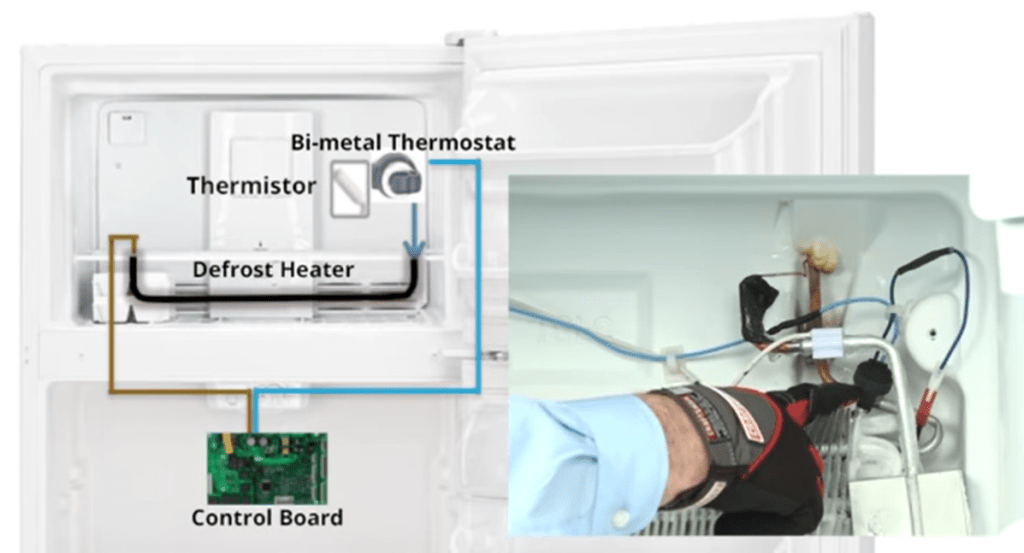Sometimes when your refrigerator is not cooling, it could be as a result of frost build-up on the wall at the back inside the freezer. It is important to understand how you can go about troubleshooting and fixing the problem. To do that you will need to understand the various components of the defrost system that are responsible for making it function properly. These include the electronic control board, the defrost heater, the thermistor, and the bi-metal thermostat. You need to understand how each one of these components works in order to be able to determine whenever one of them is responsible for the problem within the defrost system that makes the refrigerator not to cool.
For some of the tests you need to do to troubleshoot the defrost system, you need to use a multimeter. The refrigerator is not supposed to have any frost build up as long as the defrost system is automatically defrosting the evaporator after every 8 hours. But when there is a problem with the defrost system, frost builds up and will cause the clogging of the passages that allow cool air from the freezer into the refrigerator for cooling. With the clogged passages the refrigerator warms up, so we need to find out the exact cause of the problem in the defrost system.
The main components of the defrost system and possible problems
There are four main parts of the defrost system. The electronic control board is the one that starts the defrost cycle and determines how often they should be triggered. A thermistor, also known as the defrost temperature sensor, is responsible for sensing the temperature on the evaporator and sends a signal to the control board to start a defrost cycle. The electronic control board does that by turning on the defrost heater, which is responsible for the melting of any frost on the evaporator fins. If the thermistor senses the wrong temperature on the evaporator, then it doesn’t send a signal to the control board to start the defrost cycle. In that case, the control board doesn’t turn on the defrost heater and the frost on the evaporator stays put. The heater itself can also break or a defective bi-metal thermostat could fail to turn it on, which means we still end up with frost buildup on the evaporator. A broken heater or a faulty bi-metal thermostat requires replacement.
Checks for defrost heater problems
To test the defrost heater, first switch into a forced defrost mode. You can refer to the technical sheet of your appliance to know how to do this. You can find it taped at the back of the appliance or behind the bottom front grill. To exit the forced defrost mode, you can just unplug the appliance. While in the forced defrost mode if the heater does not turn on, you will need to check its continuity using its circuit wire terminals from inside the electronic control board which you will have to remove. Do the heater continuity test while the appliance is unplugged, but you will first need to make sure the temperature is below 46 degrees Fahrenheit. If while in the forced mode the heater melts the frost, it means it is working as it should, so what you need to check instead is the resistance of the thermistor.
Problem with the thermistor or the control board
With the defrost heater circuit showing continuity, it means the problem lies with the electronic control board of the thermistor. A bad control board does not send an electrical signal through the defrost heater circuit. To check the resistance of the thermistor, you first need to remove the panel at the back of the freezer to access it. While measuring the resistance take note of the temperature and compare the reading to what you see on the tech sheet. If it’s off by 10% you will need to replace the defrost temperature sensor (thermistor). If the thermistor checks indicate no problem, then you will probably need to replace the control board.
